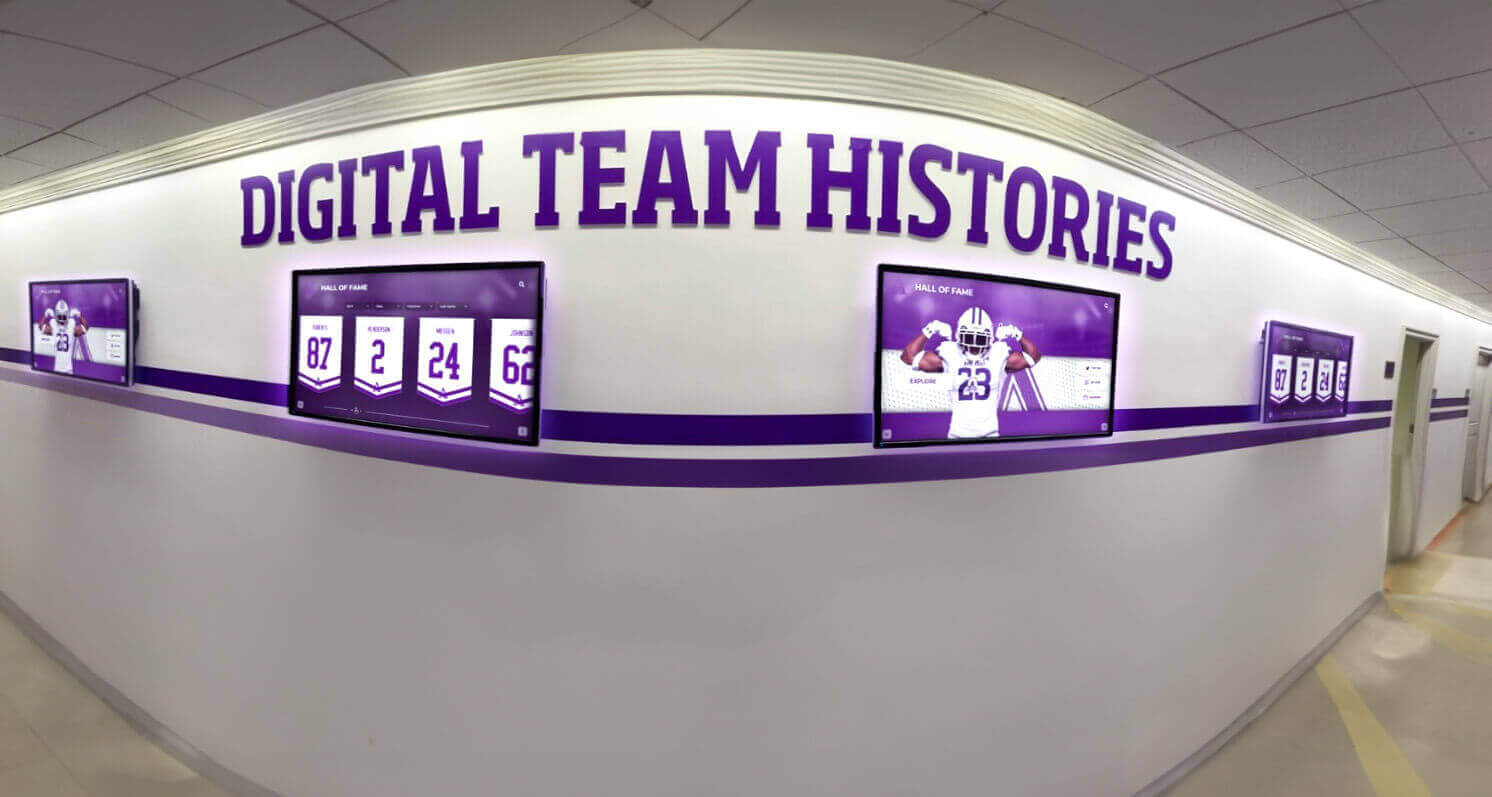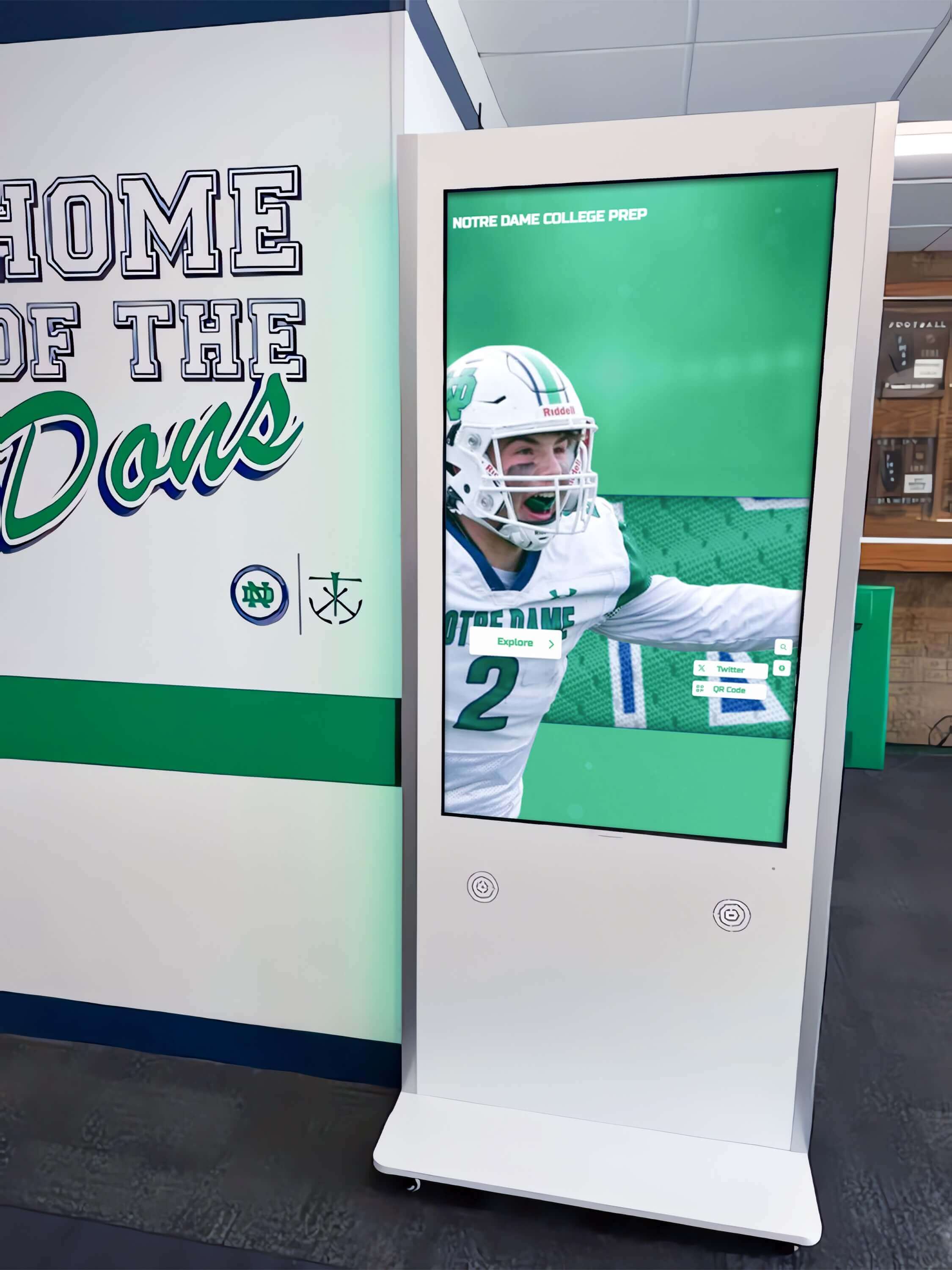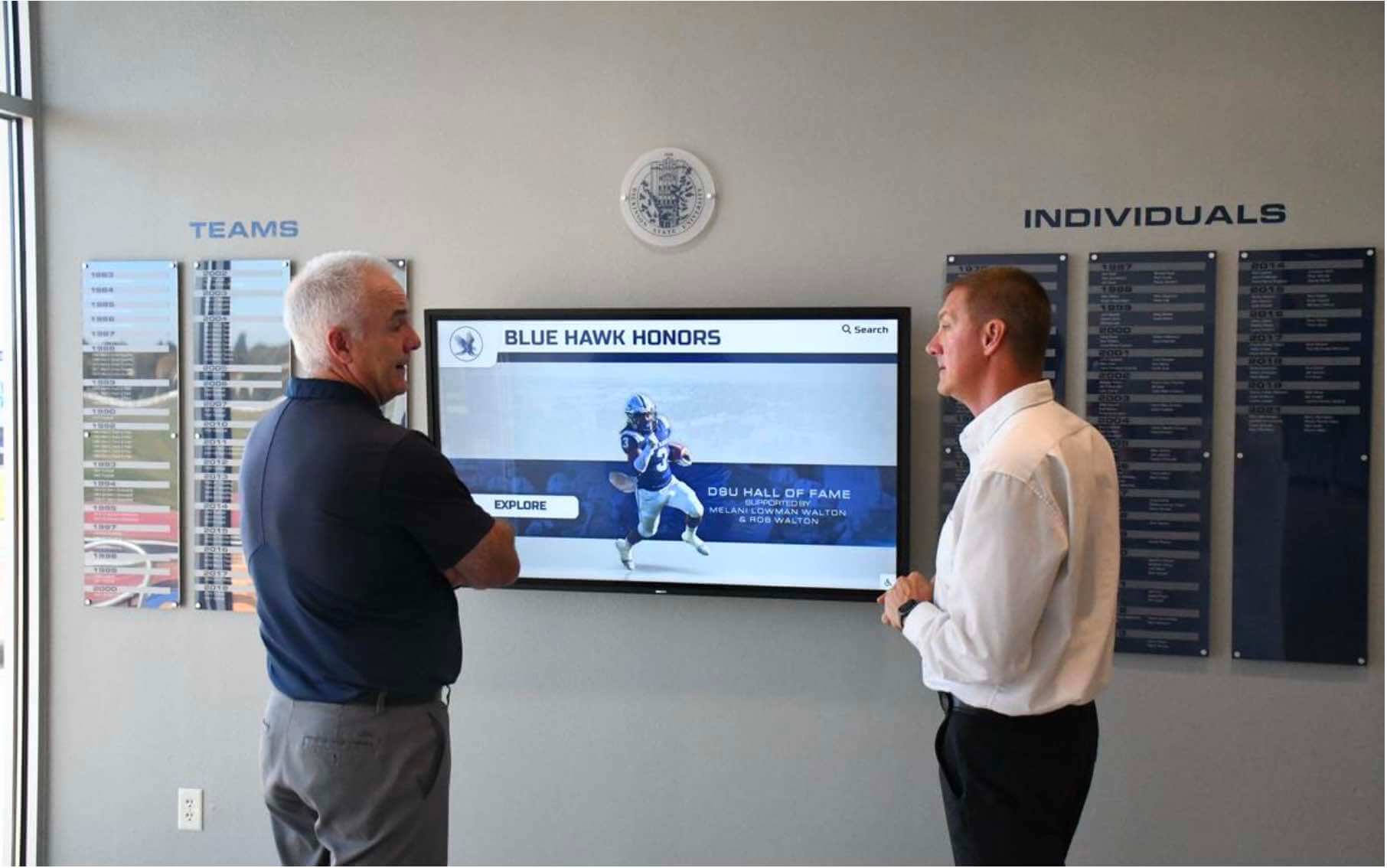Key Takeaways
Discover how college football hall of fames celebrate legendary players, coaches, and moments. Learn about recognition displays that preserve athletic excellence.
The Tradition of College Football Recognition
College football occupies a unique place in American sports culture. Unlike professional leagues, college football connects deeply with educational institutions, alumni networks, and regional identities. The tradition of recognizing outstanding players and coaches through hall of fame inductions creates continuity across generations, linking yesterday’s heroes with today’s student athletes.
Recognition traditions in college football include multiple dimensions:
- National Recognition: Institutions like the College Football Hall of Fame honor the sport's all-time greatest contributors
- Conference Halls of Fame: Athletic conferences recognize outstanding performers from member institutions
- University Halls of Fame: Individual schools celebrate their own legendary athletes, coaches, and moments
- Position-Specific Recognition: Specialized awards honor excellence at specific positions throughout college football
- Championship Recognition: Permanent displays commemorate team championships and historic seasons
These layered recognition structures ensure excellence receives celebration at every level, from individual programs through national prominence.

National College Football Hall of Fame
The College Football Hall of Fame represents the sport’s most prestigious recognition, honoring players and coaches who have made exceptional contributions to college football. Located in Atlanta, Georgia, this national institution serves as the definitive celebration of college football excellence.
Selection and Induction Process
Hall of fame selection follows rigorous standards ensuring only the most deserving individuals receive this ultimate honor. For players, eligibility requires being named a first-team All-American by a major selector, playing their last season at least ten years prior, and demonstrating exceptional on-field performance throughout their college careers. Coaches must have coached at least ten years with a minimum winning percentage of .600, been retired for at least three years, and made significant contributions to the sport beyond their win-loss records.
The selection process involves nomination, extensive review by selection committees, and voting by a distinguished panel including former players, coaches, journalists, and college football administrators. This thorough process ensures the hall of fame maintains its prestige as college football’s highest individual honor.

Interactive Exhibits and Recognition
Modern hall of fame facilities have evolved far beyond static displays. The College Football Hall of Fame features interactive exhibits that engage visitors through technology and storytelling. Guests can explore comprehensive player databases, watch highlight footage from legendary performances, participate in interactive football experiences, learn about rule changes and innovations that shaped the sport, and discover stories behind iconic moments in college football history.
These immersive experiences create memorable visits that educate new generations about college football’s rich heritage while honoring those who built that legacy. Digital recognition technology enables facilities to present vast amounts of content without the space constraints of traditional physical displays.
University-Specific Football Halls of Fame
While national recognition represents the pinnacle, university halls of fame hold special significance for campus communities. These institution-specific recognition programs celebrate local heroes who embodied school pride and created lasting memories for their communities.
Why Universities Maintain Football Halls of Fame
🏆 Preserving Institutional Memory
Hall of fame displays create permanent records of program achievements, ensuring legendary players and historic moments remain part of institutional consciousness across decades and generations.
🎯 Building Alumni Connections
Recognition displays strengthen bonds between universities and former athletes, creating touchpoints for ongoing engagement and fostering pride in shared athletic heritage.
💪 Inspiring Current Athletes
Visible celebration of past excellence motivates current student athletes to pursue their own greatness, creating aspirational examples of what commitment and dedication can achieve.
📚 Educating New Generations
Hall of fame displays introduce current students to program history, building appreciation for traditions and creating understanding of athletic excellence standards.
Many universities find that digital hall of fame displays offer practical advantages for showcasing extensive football history without overwhelming physical space limitations.
Essential Elements of Football Hall of Fame Displays
Effective football hall of fame recognition requires thoughtful content selection and presentation that honors individuals while telling compelling program stories.

Individual Player Recognition
Comprehensive player profiles form the foundation of most football halls of fame:
- Career Statistics: Rushing yards, passing yards, touchdowns, tackles, and other position-specific achievements
- Honors and Awards: All-American selections, conference awards, national recognition, team captaincy
- Championship Contributions: Role in conference championships, bowl victories, and historic seasons
- Notable Performances: Record-breaking games, clutch performances in critical moments
- Post-College Success: Professional career highlights, coaching achievements, contributions to society
- Personal Narratives: Background stories, overcoming adversity, impact on teammates
These comprehensive profiles create complete portraits of individuals beyond just statistics, celebrating character and influence alongside athletic achievement.
Coaching Excellence Recognition
Great coaches shape programs through decades of influence. Hall of fame displays should honor coaching contributions including career records and winning percentages, championship seasons and conference titles, player development and professional placements, innovation and strategic contributions, program building and sustained excellence, and influence on coaching profession and sport evolution.
Coaching recognition acknowledges that program success depends on leadership, strategy, and culture-building as much as individual player talent. The most successful programs have been guided by legendary coaches whose impact extends far beyond their tenure.

Team Championship Recognition
Individual excellence matters immensely, but football remains fundamentally a team sport. Hall of fame displays should prominently feature championship team recognition including undefeated seasons, conference championships, bowl game victories, national championship teams, and historic seasons that defined program identity.
Team recognition celebrates collective achievement and the chemistry, sacrifice, and unity required for championship success. Many former athletes remember championship seasons as their most meaningful college experiences, making this recognition deeply valued.
Modern Recognition Technology for Football Programs
Technology has revolutionized how universities and colleges recognize football excellence, offering capabilities impossible with traditional static displays.
Traditional vs. Digital Recognition Approaches
Traditional Recognition Methods
- Physical Plaques: Individual plaques mounted on walls listing inductees and achievements
- Trophy Cases: Glass-enclosed displays showcasing trophies, helmets, and memorabilia
- Retired Jerseys: Framed jerseys displayed in stadiums or athletic facilities
- Photo Galleries: Hallway displays featuring action photos and team pictures
- Record Boards: Painted or printed boards listing statistical leaders
Digital Recognition Advantages
- Unlimited Capacity: Recognize unlimited individuals without physical space constraints
- Rich Multimedia: Include photos, videos, audio interviews, and interactive timelines
- Easy Updates: Add new inductees and update existing profiles instantly
- Interactive Exploration: Allow visitors to search, filter, and discover content
- Remote Access: Provide web-based access for alumni worldwide
- Flexible Presentation: Highlight different content for special occasions or recruiting
Schools implementing sports hall of fame design principles that incorporate digital technology report enhanced visitor engagement and expanded recognition capacity.
Creating Compelling Hall of Fame Content
The most effective football hall of fame displays tell stories that resonate emotionally while documenting facts and statistics accurately.
Storytelling Through Recognition
Statistics provide essential context, but compelling narratives create lasting impressions. Effective storytelling approaches include sharing journey narratives about how players overcame obstacles, reached college football, and achieved excellence; highlighting defining moments that shaped careers or program history; exploring team dynamics and relationships that created championship chemistry; connecting past and present by showing how earlier players influenced later generations; and emphasizing values and character demonstrated through athletic careers.
These narrative elements transform recognition displays from data repositories into inspiring celebrations of human achievement and institutional excellence.

Multimedia Content Integration
Modern recognition systems support diverse content types that enhance engagement. Consider incorporating game highlight videos showing signature plays and performances, interview footage with inductees reflecting on their careers, historical photographs documenting players in action and championship celebrations, audio recordings of memorable radio broadcasts or crowd reactions, and interactive timelines showing program evolution across decades.
Multimedia content creates immersive experiences that static displays cannot match, allowing visitors to connect more deeply with recognized individuals and moments. Solutions like football record boards can incorporate these diverse media types seamlessly.
Integrating Football Recognition with Broader Athletic Programs
While football often receives significant attention, effective recognition programs celebrate excellence across all sports within comprehensive athletic frameworks.
Comprehensive Athletic Recognition
Creating Balanced Recognition Across Sports
- Equal Access: Ensure athletes from all sports can achieve hall of fame recognition based on consistent excellence standards
- Shared Facilities: Design recognition spaces that honor multiple sports rather than segregating by sport
- Common Criteria: Establish clear induction standards that apply fairly across different athletic programs
- Integrated Displays: Present football excellence within context of overall athletic department achievements
- Cross-Sport Recognition: Celebrate multi-sport athletes who excelled in football and other sports
This balanced approach builds athletic department unity while ensuring football's prominent role in many programs receives appropriate celebration. Comprehensive athletic recognition displays support recruiting across all sports programs.

Implementing a University Football Hall of Fame
Creating or enhancing a football hall of fame requires strategic planning that balances tradition, budget, and long-term sustainability.
Hall of Fame Development Process
Establish Standards
Define clear induction criteria, selection processes, and governance structures for ongoing operations

Research History
Compile comprehensive program records, identify deserving candidates, gather photos and stories from past eras

Design System
Choose physical or digital display approach, design layouts, plan content organization and navigation

Develop Content
Create player profiles, gather multimedia assets, write compelling narratives about achievements

Launch and Celebrate
Host induction ceremony, unveil recognition displays, engage alumni and community in celebration

Sustain Program
Establish annual induction process, maintain displays with current content, engage alumni network

Understanding the complete implementation process helps institutions create sustainable programs that honor excellence across decades.
Selection Criteria and Governance
Maintaining hall of fame integrity requires clear standards and fair selection processes that command community respect.
Establishing Induction Standards
Transparent criteria prevent controversy and ensure deserving individuals receive recognition. Consider these standard elements for player recognition: minimum seasons played or games started, statistical thresholds for position groups, All-American or all-conference selections, championship contributions, impact on program trajectory, and character and sportsmanship demonstrated.
For coaches, common criteria include minimum seasons coached, winning percentage thresholds, championship achievements, player development records, contributions beyond win-loss records, and positive program influence.
Clear published standards help stakeholders understand what constitutes hall of fame-worthy achievement while giving selection committees objective frameworks for evaluation.
Selection Committee Structure
Effective governance typically involves diverse selection committees including athletic department representatives, former players and coaches, alumni association members, faculty athletic representatives, and media or community representatives familiar with program history.
This diverse representation ensures multiple perspectives inform selection decisions while building community confidence in the process. Regular committee rotation prevents entrenchment while maintaining institutional memory through staggered terms.

Engaging Alumni Through Football Recognition
Hall of fame programs create powerful opportunities for ongoing alumni engagement and relationship building.
Recognition as Alumni Engagement Tool
Football hall of fame displays serve multiple alumni engagement purposes. They create reasons for return visits as alumni come to see their own recognition or honor former teammates, provide gathering points during homecoming and reunion weekends, generate content for alumni communications and social media, honor non-athlete alumni with significant program contributions, and create volunteer opportunities for former players in selection or program governance.
Schools that strategically leverage recognition displays as alumni engagement tools report stronger donor relationships, increased event attendance, and more active alumni networks. The combination of nostalgia and pride creates powerful emotional connections that benefit institutions across multiple dimensions.
Virtual Access for Distant Alumni
Not all alumni can visit campus regularly. Providing web-based access to hall of fame content extends engagement to alumni worldwide. Online platforms should offer complete inductee databases searchable by name, year, or achievement; multimedia content including videos, photos, and audio; interactive timelines showing program evolution; ability to share profiles on social media; and submission portals for alumni stories and memories.
These digital extensions democratize access while creating opportunities for alumni worldwide to engage with program heritage regardless of geographic distance from campus.
Budget Considerations for Hall of Fame Programs
Financial planning ensures recognition programs remain sustainable across decades while delivering appropriate honor to inductees.
Traditional Display Costs
Physical recognition systems require various investments including custom plaques at $200-500 per inductee, trophy cases ranging from $3,000-15,000 depending on size and quality, professional photography and printing at $500-2,000 per inductee, installation labor for mounting and arrangement, and annual maintenance and updates.
While individual components may seem modest, comprehensive programs recognizing dozens or hundreds of inductees accumulate significant costs. Traditional displays also require ongoing investment as new inductees join each year.
Digital Display Investment
Digital recognition systems involve different cost structures with higher initial investment but lower ongoing expenses. Typical costs include commercial-grade touchscreen hardware ($4,000-8,000 per display), digital recognition platform software ($3,000-7,000 annually), initial content development ($5,000-15,000 depending on scope), professional installation ($1,000-3,000), and ongoing content management ($1,000-3,000 annually).
Over 10-15 year lifecycles, digital solutions often prove cost-competitive with traditional approaches while offering significantly enhanced capabilities. Many schools find digital systems more sustainable because adding new inductees requires no additional hardware investment.
For comprehensive planning guidance, see resources on digital hall of fame planning and budgeting.
Celebrating Football Excellence Year-Round
Hall of fame recognition need not be limited to single static displays. Strategic programs integrate recognition throughout the athletic experience.
Comprehensive Recognition Integration
Maximize hall of fame impact by incorporating recognition throughout athletic facilities and experiences:
- Stadium Features: Incorporate hall of fame elements into stadium design and game day experiences
- Facility Naming: Name practice facilities, meeting rooms, or fields for legendary figures
- Locker Room Displays: Surround current players with reminders of program excellence standards
- Media Integration: Feature hall of fame content in game programs, video boards, and broadcasts
- Social Media: Share hall of fame stories, throwback content, and historical highlights regularly
- Recruiting Materials: Showcase program tradition and excellence to prospective student athletes
This comprehensive integration ensures recognition serves multiple strategic purposes beyond simple commemoration.

The Role of Recognition in Building Program Culture
Beyond honoring past achievement, hall of fame programs shape current program culture and future aspirations.
Setting Excellence Standards
Visible recognition of legendary performers establishes clear excellence standards. Current student athletes see exactly what level of achievement earns lasting recognition, understand the commitment required to reach hall of fame status, connect their efforts with program tradition and history, and gain motivation from seeing that excellence receives permanent honor.
These visible standards create accountability and aspiration that elevate overall program performance. When current athletes pursue excellence partly because they hope to join the hall of fame someday, recognition programs actively contribute to ongoing competitive success.
Connecting Generations
Hall of fame programs create bridges between eras. Former players stay connected to programs through recognition events, current athletes learn from past legends about what creates lasting success, alumni mentor current players, sharing wisdom gained through experience, and families develop multi-generational connections to programs.
These connections across time create program continuity that strengthens identity and builds resilience through challenging periods. Programs with strong historical consciousness tend to maintain higher standards because current participants understand they’re stewards of something larger than themselves.
Conclusion
College football hall of fames serve vital functions in higher education athletics, preserving institutional memory, honoring exceptional achievement, inspiring current and future student athletes, engaging alumni networks, and building program pride and tradition. Whether maintained through traditional physical displays or modern digital recognition systems, these programs create tangible connections between past excellence and future aspirations.
The most effective football hall of fame programs balance reverence for history with contemporary relevance. They honor legendary figures from decades past while actively engaging current students and athletes. They maintain rigorous selection standards while ensuring transparent, fair processes. They celebrate individual excellence while emphasizing team values and collective achievement.
As recognition technology continues evolving, institutions gain new tools for celebrating football excellence. Digital recognition displays like those provided through solutions like Rocket Alumni Solutions offer universities and colleges practical ways to honor extensive program history without overwhelming physical space constraints. These systems provide unlimited capacity for recognizing deserving individuals, easy content updates as new inductees join each year, rich multimedia content including videos and interactive features, searchable databases allowing easy information discovery, and web-based access extending engagement to alumni worldwide.
Whether planning a new hall of fame program or enhancing existing recognition, the core mission remains constant: celebrating the remarkable individuals who have elevated college football programs through extraordinary dedication, talent, and achievement. By honoring these legends appropriately, institutions preserve vital history while inspiring future generations to pursue their own excellence.































